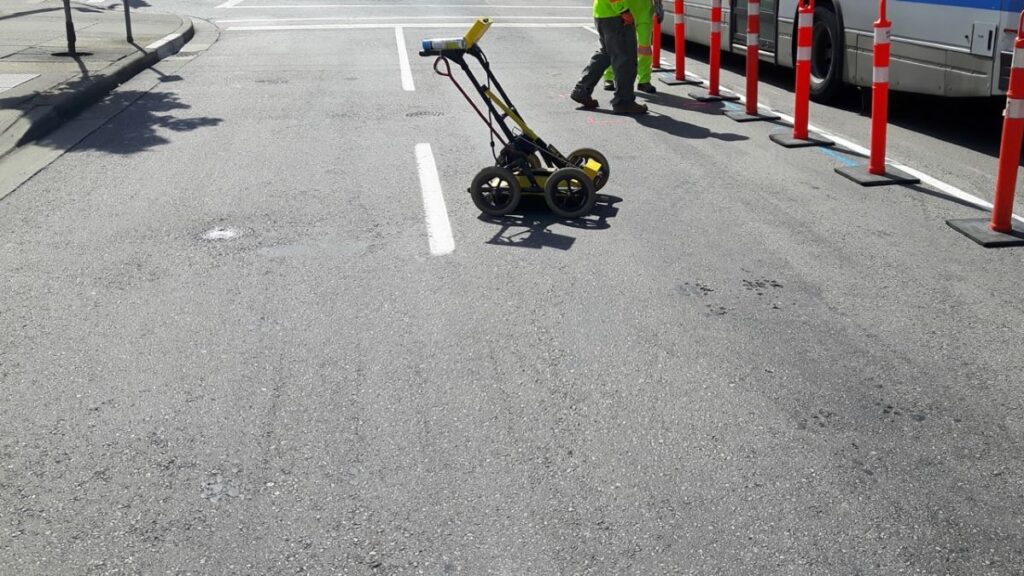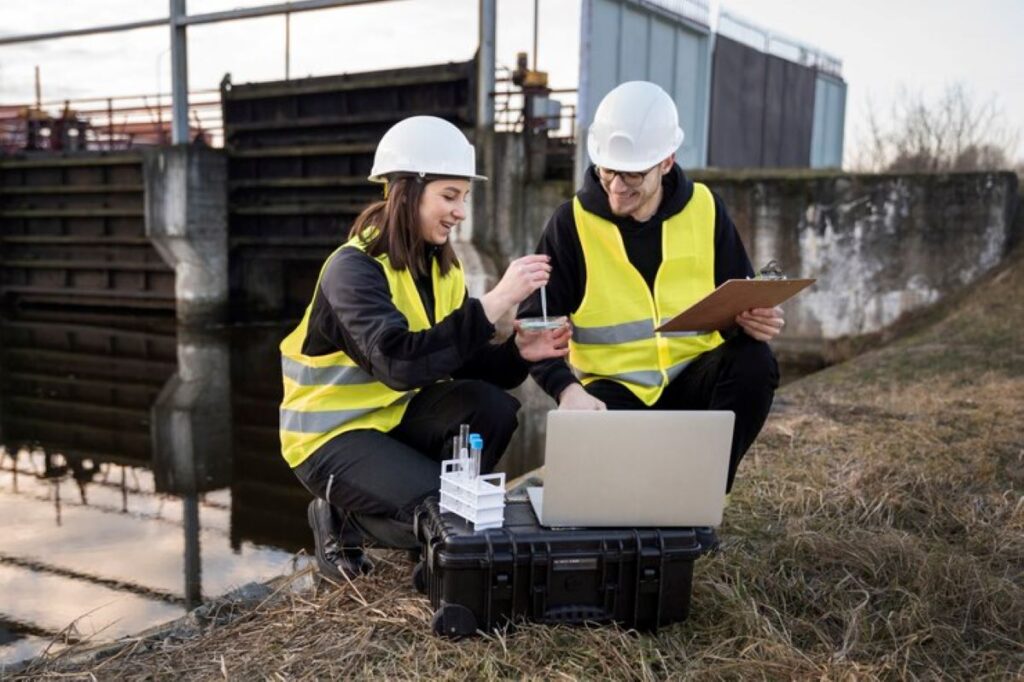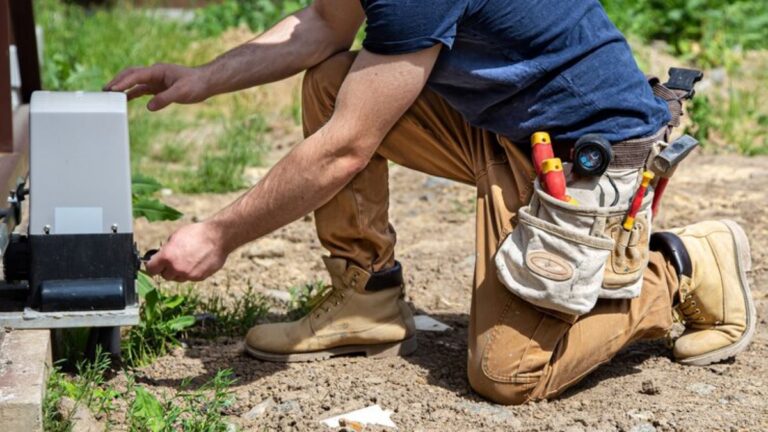Hidden beneath our feet lies a complex network of underground utilities that powers modern life. The prevention of damage to these vital underground pipes stands as a critical priority for construction and infrastructure projects across Australia.
Pipe location services serve as an essential safeguard against costly accidents and disruptions. These specialised detection methods use advanced technologies to create detailed maps of underground infrastructure, identifying the precise location of water mains, gas pipes, electrical conduits, and telecommunications cables.
Accurate utility mapping plays a crucial role in:
- Project Planning: Enabling informed decision-making for construction layouts
- Risk Management: Identifying potential hazards before ground breaking
- Cost Control: Preventing expensive repairs and project delays
- Safety Assurance: Protecting workers and the public from dangerous utility strikes
Professional pipe location services have become indispensable for construction managers, civil engineers, and property developers who need to protect existing infrastructure while executing new projects efficiently and safely.
Understanding Pipe Location Services
Modern pipe location services use advanced technologies to accurately find and map underground utilities. One such technology is Ground Penetrating Radar (GPR), which sends electromagnetic waves into the ground to create detailed images of buried objects. This method can detect both metallic and non-metallic pipes without causing any damage to the surface. However, it’s important to be aware of the GPR limitations in utility locating, which can affect its effectiveness in certain situations.
Another important tool in pipe location is Electromagnetic Locators (EML), which work alongside GPR systems. EML devices are specifically designed to identify metallic pipes and cables by detecting the magnetic fields they generate. These locators are particularly effective for locating various types of underground infrastructure, including:
- Water mains and service lines
- Gas pipelines
- Electrical conduits
- Telecommunications cables
- Sewer and drainage systems
How Professional Utility Locating Works
Professional utility locating involves a systematic process that combines different techniques and expertise. Here are the key steps involved:
- Site Assessment: Before any scanning or digging takes place, professionals evaluate the terrain conditions and gather historical utility records. This information helps them understand what types of utilities might be present in the area.
- Surface Marking: Visible utility access points such as manholes and valve boxes are identified and marked on the surface. This step ensures that the scanning equipment can be positioned accurately.
- Technology Deployment: GPR and EML equipment are used to scan specific areas where utilities are suspected to exist. The combination of these two technologies increases the chances of detecting both metallic and non-metallic pipes.
- Data Analysis: Once the scanning is complete, the collected data is processed using specialised software. This analysis generates detailed maps showing the location and depth of various underground utilities.
- Depth Verification: To ensure accuracy, key points along the utility routes may be verified by digging small test pits or using other non-destructive methods.
Factors Affecting Utility Detection Accuracy
The accuracy of utility detection can vary depending on several factors:
- Soil composition: Different types of soil have varying levels of conductivity, which can affect how well electromagnetic signals penetrate through them.
- Pipe material and size: The type of material used for constructing pipes (e.g., PVC, steel) as well as their diameter can influence how easily they can be detected.
- Burial depth: Utilities buried at greater depths may require more powerful scanning techniques for accurate identification.
- Surface conditions: Objects on or above the ground (e.g., concrete slabs, vegetation) can obstruct signals and make it challenging to locate certain utilities.
- Environmental interference: Nearby structures or electrical sources may create noise that interferes with signal reception.
To overcome these challenges, professional service providers employ an integrated approach by combining multiple detection methods tailored to specific site conditions. This ensures comprehensive identification of underground infrastructure while minimising potential disruptions during construction or maintenance activities.
Risks Associated with Undetected Underground Pipes
Undetected underground pipes pose significant risks during excavation and construction projects. Accidental strikes can trigger catastrophic events with severe consequences for workers, the environment, and project timelines.
Safety Hazards
- Gas line ruptures create immediate explosion risks
- High-pressure water main breaks can cause ground collapse
- Live electrical conduit strikes lead to electrocution dangers
- Damaged telecommunications lines disrupt emergency services
Environmental Impact
- Sewage line breaks contaminate soil and waterways
- Chemical pipe damage releases hazardous materials
- Oil pipeline strikes cause extensive ground pollution
- Disrupted drainage systems flood surrounding areas
Financial Consequences
- Emergency repair costs ranging from £10,000 to £100,000+
- Project delays extending weeks or months
- Legal liabilities from property damage
- Insurance premium increases
- Regulatory fines and penalties
- Lost productivity and worker downtime
Service Disruption
- Communities left without essential utilities
- Business operations halted
- Healthcare facilities facing critical system failures
- Transportation networks requiring emergency closure
The ripple effects of hitting unmarked underground infrastructure extend far beyond the immediate incident site. A single strike can impact thousands of residents, halt business operations, and create long-lasting environmental damage. These risks highlight the critical need for proper pipe location services before any ground-breaking work begins.
Professional utility locating services identify and map underground assets with precision, creating detailed documentation of subsurface infrastructure. This crucial step protects workers, communities, and project budgets from the devastating impact of accidental utility strikes.

How Pipe Location Services Mitigate Risks and Enhance Project Efficiency
Accurate pipe location services serve as a critical risk management tool in construction and infrastructure projects. Professional mapping services create detailed underground utility layouts before any excavation work begins, enabling project teams to plan safe and efficient construction pathways.
1. Precise Pre-Construction Planning
Pipe location services provide essential information for effective pre-construction planning, including:
- Digital mapping of existing infrastructure
- Identification of safe dig zones
- Development of strategic excavation routes
- Creation of comprehensive utility maps for future reference
Detailed site investigations eliminate guesswork and reduce the likelihood of accidental utility strikes. Advanced technologies like Ground Penetrating Radar (GPR) and Electromagnetic Locating (EML) provide precise depth and positioning data, allowing construction teams to work with confidence around existing infrastructure.
2. Targeted Repair Benefits
In the event of utility damage, accurate pipe location services offer several benefits for targeted repairs:
- Pinpoint exact repair locations
- Minimise unnecessary excavation
- Reduce restoration costs
- Decrease project completion time
The integration of pipe location data supports the safe installation of new infrastructure alongside existing utilities. This systematic approach enables construction teams to:
- Maintain required clearance distances
- Design optimal pipeline routes
- Avoid utility congestion points
- Plan cost-effective installation methods
3. Professional pipe location services enhance project efficiency through:
Time Management
Effective time management is crucial for project success. Pipe location services contribute to time savings in various ways:
- Reduced delays from unexpected discoveries
- Streamlined permit applications
- Efficient resource allocation
- Accelerated project timelines
Cost Control
Controlling costs is essential for maintaining project budgets. Pipe location services help achieve cost savings through:
- Decreased repair expenses
- Minimised surface restoration
- Optimised equipment usage
- Reduced labour requirements
These services align with safety compliance requirements and industry best practices, creating a foundation for successful project delivery. The implementation of comprehensive pipe location services transforms potential risks into manageable variables, supporting smooth project execution and protecting valuable infrastructure assets.
The Role of Professional Surveyors and Utility Locators in Pipe Location Services
Professional surveyors and utility locators are crucial specialists in the intricate task of finding and mapping underground pipes. These experts offer a wide range of services for property and construction projects:
Core Professional Services:
- Detailed underground utility mapping
- Site investigation management
- Infrastructure assessment
- Documentation and reporting
- Risk mitigation strategies
- Compliance verification
Registered surveyors use their skills to calibrate advanced equipment, interpret data, and create accurate maps. Their specialised knowledge guarantees precise depth measurements and spatial relationships between different underground assets.
Utility locators support surveying efforts by:
- Conducting non-destructive investigations
- Identifying utility types and materials
- Creating detailed service plans
- Marking critical points on-site
- Providing real-time guidance during excavation
The expertise of these professionals goes beyond basic pipe detection. They are familiar with local regulations, industry standards, and safety protocols specific to various utility types. This knowledge is invaluable when dealing with:
- High-pressure gas lines
- High-voltage electrical cables
- Water mains
- Telecommunications infrastructure
- Stormwater systems
Professional teams hold up-to-date certifications and stay informed about new technologies and methods. Their experience enables them to spot potential conflicts between existing and planned infrastructure, helping projects avoid expensive redesigns or modifications during construction phases.
Collaborating with certified professionals guarantees compliance with Australian Standards for subsurface utility information (AS 5488) and provides documented proof for project compliance requirements. These specialists produce comprehensive reports and recommendations that aid decision-making throughout the project lifecycle.
Case Studies: Real-World Applications of Pipe Location Services in the Telecommunications Sector and Government Infrastructure Projects
The practical application of pipe location services spans critical infrastructure projects across both public and private sectors. Recent case studies demonstrate the vital role these services play in project success.
Telecommunications Sector: CI International NBN Implementation
- Pre-excavation mapping identified multiple underground utilities
- Located existing fibre optic cables at depths of 0.5m to 2m
- Prevented potential service disruption to 5,000+ households
- Reduced project timeline by 30% through precise utility mapping
- Saved an estimated £75,000 in potential repair costs
School Infrastructure NSW Government Project
- Comprehensive site investigation across 12 school campuses
- Located water mains, gas lines, and electrical conduits
- Identified previously undocumented drainage systems
- Protected heritage-listed buildings from excavation damage
- Enabled safe installation of new educational facility infrastructure
City of Sydney Council Underground Services Project
- Mapped complex utility networks in high-density urban areas
- Located intersecting water, gas, and telecommunications lines
- Identified optimal routes for new service installations
- Prevented service interruptions to business districts
- Facilitated coordination between multiple utility providers
These real-world applications highlight the precision and efficiency of modern pipe location services. The successful completion of these projects demonstrates the importance of accurate utility mapping in both telecommunications infrastructure development and government facility upgrades.

Cost Benefits and Competitive Pricing Considerations in Pipe Location Services
The economic advantages of professional pipe location services extend far beyond their initial investment costs. A comprehensive analysis reveals significant cost-benefit ratios when comparing service fees against potential damage expenses:
Direct Cost Savings:
- Prevention of utility strikes that can cost £10,000-£100,000 per incident
- Reduction in project delays and associated labour costs
- Minimised repair and restoration expenses
- Lower insurance premiums due to reduced risk profiles
Pricing Structure Variations:
- Per-day rates for comprehensive site surveys
- Project-specific quotations based on scope and complexity
- Volume-based discounts for ongoing contracts
- Negotiable rates for long-term partnerships
Professional pipe location services offer flexible pricing models tailored to project requirements and budget constraints. Companies like Wumara Group maintain competitive market rates while delivering high-quality subsurface utility mapping services.
Value-Added Benefits:
- Detailed documentation for future reference
- Expert consultation during project planning
- Risk assessment reports
- Technical support throughout project execution
The cost-effectiveness of pipe location services becomes particularly evident when factoring in the potential financial impact of utility strikes. A single incident can result in:
- Emergency repair costs
- Project timeline extensions
- Legal liabilities, which could fall under ADA regulations
- Regulatory fines
- Reputation damage
- Lost business opportunities
Professional service providers structure their pricing to balance accessibility with service quality, ensuring clients receive maximum value while maintaining industry standards. This approach creates a sustainable partnership model benefiting both service providers and clients across various sectors.
Conclusion
Pipe location services are crucial in preventing expensive damage to infrastructure. By using advanced technology, professional knowledge, and organised methods, these services help safeguard valuable underground assets. Conducting thorough pipe location surveys leads to significant benefits such as avoiding damage, improving project efficiency, and minimising liability risks.
Professional pipe location services offer protection for infrastructure investments in the following ways:
- Preventing accidental strikes on utility lines
- Allowing for accurate planning of excavation activities
- Ensuring compliance with regulations
- Keeping projects on schedule
- Safeguarding the safety of workers
The advantages of these services go beyond immediate cost savings. They also include long-term protection of assets and sustainability of operations. Hiring qualified utility locators is a strategic move towards safeguarding infrastructure and ensuring successful projects.
